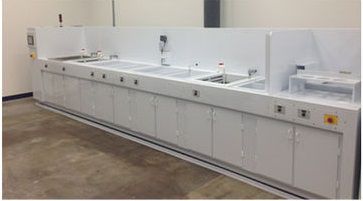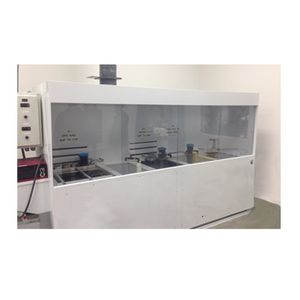
- Products
- Catalogs
- News & Trends
- Exhibitions
Wet bench




Add to favorites
Compare this product
Description
Citric / Nitric Passivation Wet Bench for Stainless Steel & Titanium
Our passivation wet bench systems are used for citric / nitric acid passivation of stainless steel, titanium and other metal material parts. Typical construction materials include polypropylene, stainless steel, PVDF, PVC-C and others depending on the chemical handling properties required for the application.
This integrated metal passivation wet bench has in-tank cross flow exhaust allowing for cleaning, rinsing, passivation and final rinsing in an open top wet bench.
Above enclosed passivation wet bench allows for post clean processing, electropolishing, rinsing, nitric acid neutralization and nitric passivation, and a final rinse.
Nitric passivation with cascade overflow rinse stations and side flow & top exhaust
Common Applications for Passivation Wet Benches
Industrial, aerospace and medical device stainless steel passivation per ASTM A967 with:
Nitric acid passivation type 1, 2, 3, 4 with sodium dichromate
Citric acid passivation type 1, 2, 3, 4, & 5 ASTM A967 using Stellar Solution’s Citrisurf
Common Configurations
Since the wet bench equipment are made from highly customizable materials like polypropylene, stainless steel, PVDF as well as Teflon®, PFA, and ECTFE (HALAR®), Best Technology is able to easily build a passivation wet bench to fit the customer specific passivation requirements.
Our passivation wet benches ensures well ventilated process enclosures for repeatable passivation processes for industrial, medical device and aerospace stainless steel and titanium metal parts. View our wet process equipment online today!
*Prices are pre-tax. They exclude delivery charges and customs duties and do not include additional charges for installation or activation options. Prices are indicative only and may vary by country, with changes to the cost of raw materials and exchange rates.




